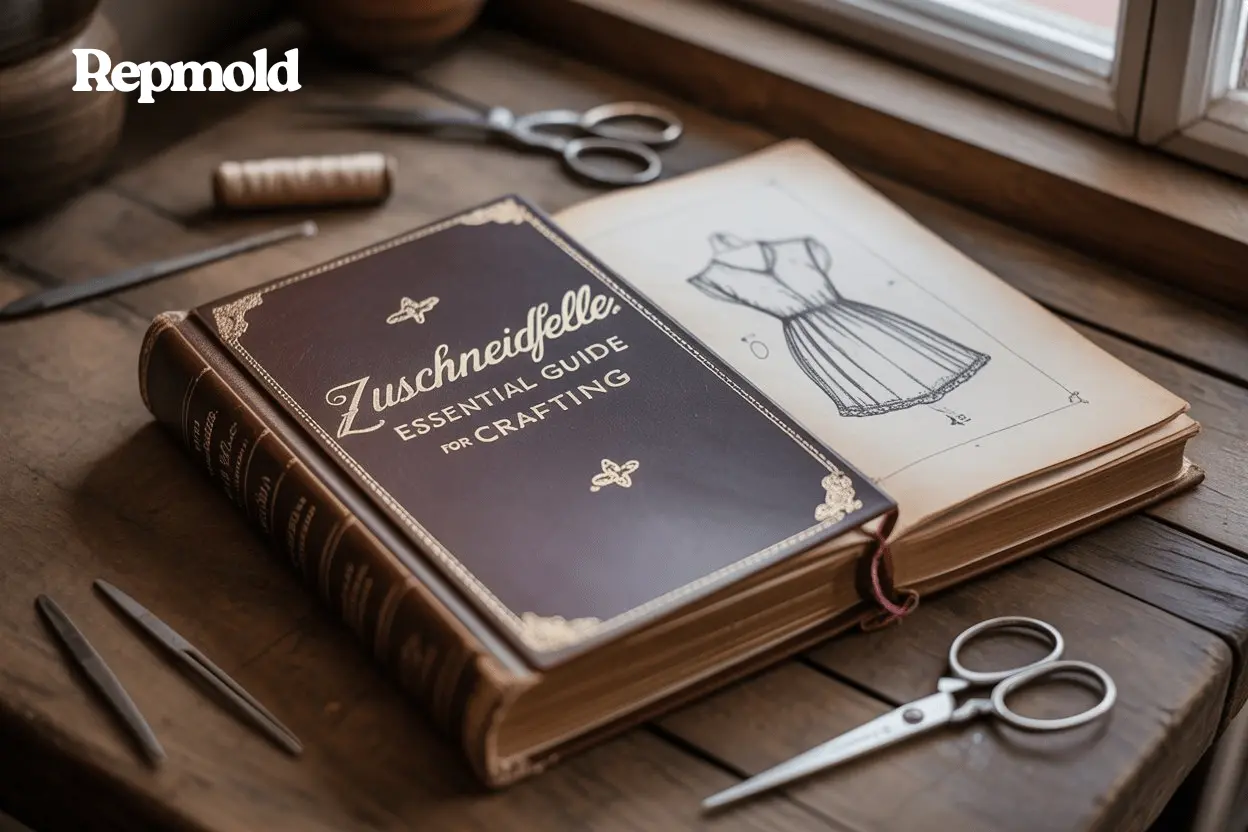Introduction
Zuschneidfelle are versatile materials every crafter should know about. They play a crucial role in precision work and creative projects. Using the right materials can transform ordinary designs into professional-quality creations.
These specially prepared hides or cutting skins offer durability, flexibility, and a unique texture. Whether you are a beginner or an experienced artisan, zuschneidfelle enhance both accuracy and efficiency. They protect surfaces, reduce waste, and allow intricate designs with ease.
In crafting, small details matter, and zuschneidfelle ensure every cut and shape is clean. Their adaptability makes them suitable for leathercraft, DIY projects, and decorative arts. By understanding their value, crafters can elevate their skills and bring innovative ideas to life.
Zuschneidfelle are not just materials—they are tools that connect tradition with modern creativity.
What Are Zuschneidfelle?
Zuschneidfelle, a German term, literally means “cutting skins.” These are specially prepared hides. Traditionally, artisans used them in leathercraft for precise cutting and shaping. They were also essential in tailoring, providing a durable base for garments. Additionally, craftsmen used zuschneidfelle to sharpen knives and other tools, making them multifunctional.
Today, zuschneidfelle have adapted to modern needs. They are widely used in fashion for handbags, belts, and wallets. DIY enthusiasts also use them for home décor and creative projects. Decorative arts benefit from their natural texture and rustic charm.
The key qualities of zuschneidfelle include durability, flexibility, and a unique tactile surface. These properties allow crafters to work with confidence. Whether for traditional or modern applications, zuschneidfelle ensure precision and enhance every project.
History and Traditional Significance
Zuschneidfelle have a long history in craftsmanship, dating back centuries. Early artisans relied on these cutting skins for practical and decorative purposes. They were essential in tailoring, providing sturdy material for clothing and protective layers.
During the Middle Ages, craftsmen used zuschneidfelle to make belts, pouches, and other daily essentials. Skilled artisans valued their durability and flexibility. This allowed them to create functional yet beautiful items. Workshops often preserved traditional techniques, passing knowledge through generations.
The influence of tradition remains strong today. Modern crafters still follow historical practices when selecting, cutting, and shaping zuschneidfelle. These time-honored methods ensure precision and quality in contemporary projects. By connecting the past with present applications, zuschneidfelle continue to honor craftsmanship heritage.
Types of Zuschneidfelle Materials
Zuschneidfelle are available in various materials, each suited to specific crafting needs. Choosing the right type ensures durability, ease of use, and aesthetic appeal. Different materials offer unique textures, flexibility, and workability, making them ideal for diverse projects.
Common types of zuschneidfelle include:
- Natural Leather: Offers classic aesthetics and long-lasting durability. Perfect for bags, wallets, and heavy-duty projects.
- Synthetic Options (PVC, Vinyl): Lightweight, easy to clean, and ideal for decorative or outdoor crafts.
- Felt: Soft and textured, suitable for delicate projects like quilting or home décor.
- Eco-Friendly Materials (Jute, Cotton): Sustainable, biodegradable, and excellent for environmentally conscious crafting.
Selecting the right material depends on your project requirements. Each type enhances precision, creativity, and functionality in crafting. Understanding these options helps crafters achieve professional results efficiently.
How to Choose the Right Zuschneidfelle
Choosing the right zuschneidfelle can make a huge difference in crafting projects. Several factors should guide your selection. First, consider the purpose of your project. Heavy-duty items need durable materials, while decorative crafts may require softer options.
Next, evaluate durability and flexibility. Strong materials last longer and hold shapes better during cutting or shaping. Texture and finish also matter. Smooth surfaces ensure precise cuts, while textured ones provide grip and visual appeal.
Sustainability and ethical sourcing are important for eco-conscious crafters. Opt for vegetable-tanned or naturally sourced hides whenever possible. Budget is another key factor. High-quality materials may cost more, but they often save time and effort.
Quick tips: Beginners should start with easy-to-handle materials like felt or synthetic hides. Experienced crafters can experiment with natural leather for complex projects. By considering these factors, crafters can select the ideal zuschneidfelle for every project.
- Benefits of Using Zuschneidfelle in Crafting
- Precision in cutting and shaping.
- Surface protection and reduced waste.
- Versatility across projects: bags, wallets, decorative items.
- Enhances creativity and design options.
Tips for Care and Maintenance
Proper care keeps zuschneidfelle durable and functional for years. Start with regular cleaning. Use a soft brush or cloth to remove dust and debris after each use. Avoid soaking the material, as excess moisture can cause damage.
Storage is equally important. Keep zuschneidfelle in a cool, dry place, away from direct sunlight. This prevents fading, warping, and cracking over time.
Conditioning the material helps maintain flexibility. Apply a quality leather conditioner every few months for natural hides. This keeps them supple and prevents brittleness.
Additionally, protect zuschneidfelle from water and heat. If wet, let them dry naturally at room temperature. Handle gently during projects to avoid unnecessary wear.
By following these simple steps, crafters can extend the lifespan of their zuschneidfelle. Well-maintained materials continue to provide precision, reliability, and aesthetic appeal in every project.
Where to Buy Quality Zuschneidfelle
Finding quality zuschneidfelle is essential for successful crafting projects. Start by visiting local craft stores, leather shops, and fabric stores. These shops allow you to see the material firsthand. You can check texture, thickness, and overall quality before buying.
Online marketplaces and specialized websites are another great option. They offer a wider selection, including different sizes, finishes, and price ranges. Shopping online also allows access to rare or eco-friendly options not available locally.
Before purchasing, always check reviews and ratings from other crafters. Customer feedback helps identify trustworthy sellers and high-quality products. Compare prices and read descriptions carefully to avoid low-quality materials.
By exploring both local and online sources, crafters can easily find zuschneidfelle that suit their projects. Choosing the right supplier ensures reliable, durable, and visually appealing materials.
Modern Trends and Sustainability
Zuschneidfelle are gaining popularity in eco-friendly and ethical crafting. Many crafters prefer naturally sourced or vegetable-tanned materials. These options are biodegradable, long-lasting, and reduce environmental impact.
In modern applications, zuschneidfelle appear in fashion, home décor, and artisanal products. Designers use them for handbags, belts, wall hangings, and decorative items. Their natural texture adds authenticity and a timeless appeal.
Today, many designers blend tradition with modern techniques. They combine classic craftsmanship with innovative treatments to enhance durability. Sustainability remains a key focus, ensuring materials are ethically sourced and eco-conscious.
This balance of heritage and innovation allows crafters to create beautiful, responsible, and functional projects. By choosing zuschneidfelle thoughtfully, artisans contribute to sustainable trends while honoring centuries-old traditions.
Conclusion
Zuschneidfelle are invaluable materials for every crafter and artisan. They offer precision, durability, and creative flexibility. Their use connects modern projects with centuries-old craftsmanship traditions.
These materials combine tradition, versatility, and sustainability in one package. Ethically sourced and eco-friendly options make them ideal for conscious crafters. They adapt well to fashion, DIY projects, home décor, and artisanal creations.
By incorporating zuschneidfelle in your next project, you ensure quality results and timeless appeal. They protect surfaces, allow precise cuts, and enhance overall design. Exploring different materials and techniques expands creativity and craftsmanship skills.
Ultimately, zuschneidfelle bridge heritage and modern innovation. They empower crafters to create beautiful, functional, and sustainable projects every time.

